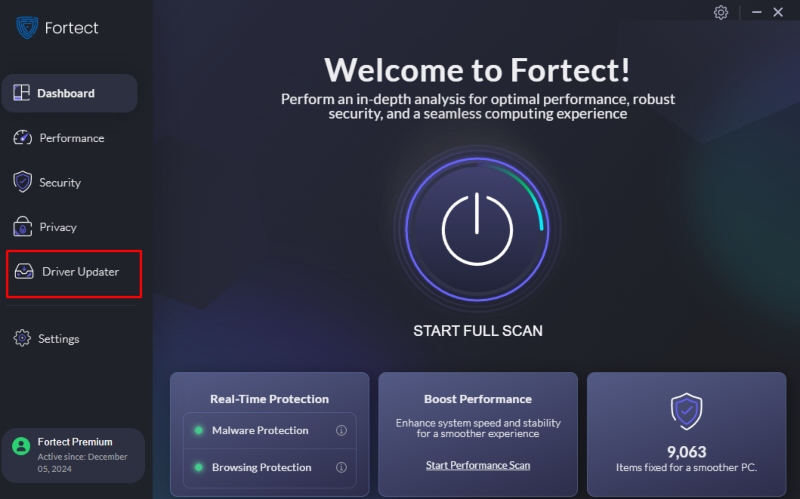How to Fix USB Device Not Recognized on Windows
It can be frustrating to find that your computer does not recognize USB devices. We’ll analyze practical steps to troubleshoot and resolve “USB Device Not Recognized” errors, ensuring smooth and efficient connections.
Whether the issue is with drivers or hardware, we offer a direct solution and preventive measures so that this error does not occur again.
Common Reasons Windows Doesn’t Recognize USB Devices

Driver Issues: Outdated, corrupted, or missing USB device drivers can prevent Windows from correctly recognizing and communicating with the connected USB device.
System Damage: Unexpected system errors and erratic behavior can stem from various causes, including user mistakes, malicious software infections, or corrupted complex drive data.
Hardware Malfunction: Physical damage, loose connections, or hardware failure in the USB device, cable, or computer’s USB port can lead to recognition problems.
Windows Updates: Occasionally, updates to Windows can introduce compatibility issues, leading to USB device recognition problems until further updates or hotfixes are released.
8 Fixes: USB Device Not Recognized Error
Try a Different Port or Device
If the issue persists with a particular USB device, connect it to a different USB port on your computer. The problem may be with the device itself if it still needs recognition. To test this, connect a different USB device to the same port. If the new device is recognized, the original device may be faulty and must be replaced.
Update USB Device Drivers

Outdated or corrupted USB device drivers can often be the culprit behind recognition issues. To update the drivers, follow these steps:
- Open the Device Manager (search for it in the Start menu).
- Expand the “Universal Serial Bus Controllers” section.
- Right-click on each USB device and select “Update driver” or “Uninstall device” (if update is unavailable).
- Follow the on-screen instructions to update or reinstall the drivers from Windows Update or the manufacturer’s website.
For a more hassle-free process of determining whether or not your computer drivers are updated or corrupted, I strongly recommend using Fortect‘s all-in-one PC solution with a manual and automatic driver updater.
The free trial of Fortect Driver Updater allows users to manually update drivers at a time. The premium version automatically scans all drivers, identifies outdated ones, and updates them with the latest versions from a secure database while optimizing PC performance.

Download and Install Fortect now.
Check USB Cable and Ports
Inspect the USB cable for any signs of damage or loose connections. Try using a different cable or USB port on the computer to eliminate hardware issues. If the device is recognized on a different port, the original port may be faulty and require repair or replacement.
Disable USB Selective Suspend
The USB selective suspend feature can cause Windows to turn off USB devices to save power. To turn it off:
- Open the Control Panel and navigate to “Power Options.”
- Click on “Change plan settings” for your current power plan.
- Click on “Change advanced power settings.”
- Expand the “USB settings” section and turn off the “USB selective suspend setting” by setting it to “Disabled.”
Check for Windows Updates
Microsoft regularly releases updates to address various issues, including USB device recognition problems. Check for and install any available Windows updates by following these steps:
- Open the Start menu and search for “Windows Update.”
- Click on “Check for updates” and install any available updates.
Restart the USB Root Hub
The USB root hub manages all USB connections on your computer. Restarting it can sometimes resolve recognition issues:
- Open the Device Manager (search for it in the Start menu).
- Expand the “Universal Serial Bus Controllers” section.
- Right-click on the USB root hub and select “Uninstall device.”
- Restart your computer, and Windows will automatically reinstall the USB root hub drivers.
Change USB Root Hub Settings
Windows’ power-saving mode can disable USB devices, preventing recognition. Disabling USB selective suspend settings resolve this issue.

- Press the Windows + R keys all together
- Type devmgmt.msc in the box to prompt the device manager to open
- Scroll down the list and find Universal Serial Bus Controller; click to expand
- Look for USB Root Hub, and right-click it.
- Select Properties to open a new window
- In this new window, select the Power Management tab
- Uncheck Allow the computer to turn off this device to save power
- Click OK to save your changes, and repeat this for all Root Hubs
- Restart your computer for the changes to take effect.
Preventing Future Errors
While this issue may recur, you can take steps to minimize it:
- Always use the Eject function: Right-click on the USB icon in the system tray and select “Eject” to safely disconnect the device.
- Wait for confirmation: Only remove the USB device after receiving the “safe to remove” message.
- Close active programs: If you don’t see the safe removal message, close any programs or windows using the USB device and try again.
- Restart if necessary: Restart your computer with the USB device still connected and attempt to eject it again.
Wrapping Up
Regardless of the reasons, it can be frustrating when your computer does not recognize your USB device, but the proper troubleshooting steps can quickly resolve them. Whether the issue is due to driver problems, hardware malfunctions, or conflicting software, the solutions provided here can help.
Try different ports or devices, update drivers, check cables, and adjust power settings to restore USB functionality. Keep your system updated and watch for software that might interfere with USB recognition. These tips will help ensure a smoother connection experience for your USB devices.
Prevention is better than a malfunction!




